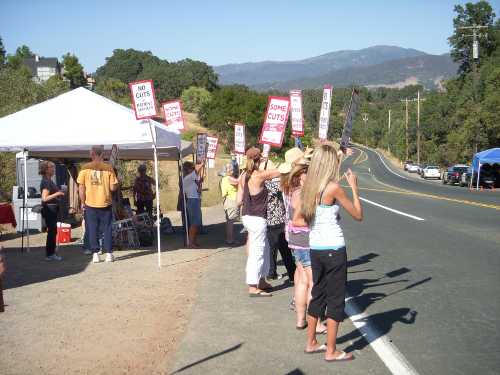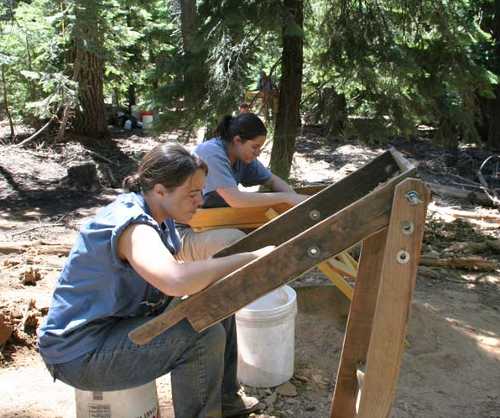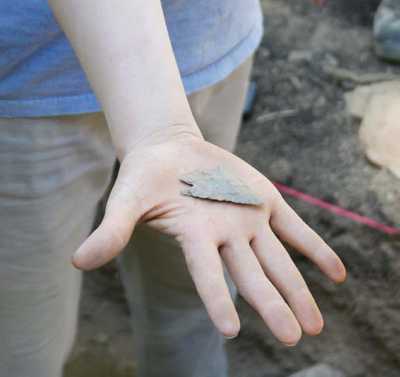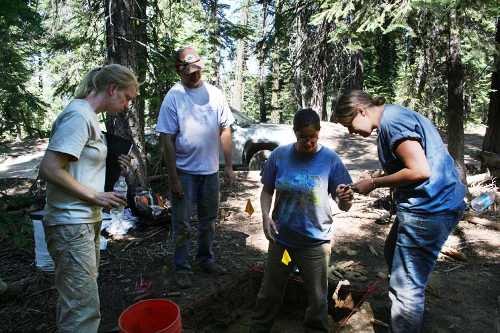- Elizabeth Larson
- Posted On
August sees local unemployment down slightly; state numbers rise
The Employment Development Department's latest report on California's employment numbers showed that Lake County had a 16.6 percent unemployment rate in August, down 0.9 percentage points over the month and 0.6 percentage points over the year.
California's unemployment rate in August was 12.1 percent, up from 12 percent in July but down from 12.4 percent in August 2010. The unemployment rate is derived from a federal survey of 5,500 California households.
The number of people unemployed in California was 2,175,000 – up by 8,000 over the month, but down by 83,000 compared with August of last year, the state reported.
The U.S. unemployment rate was unchanged in August at 9.1 percent, according to the US Bureau of Labor Statistics. The August 2010 national unemployment rate was 9.6 percent.
In August, Marin had a 7.8 percent unemployment rate, the state's lowest, and Imperial County had the highest statewide rate, 32.4 percent, according to the report.
Lake County's August rate ranked it No. 54 of the state's 58 counties, the Employment Development Department reported.
Lake's neighboring counties registered the following unemployment rates and statewide ranks: Glenn, 16.3 percent, No. 53; Colusa, 16 percent, No. 50; Yolo, 11.2 percent, No. 23; Mendocino, 10.7 percent, No. 16; Sonoma, 10 percent, No. 10; and Napa, 8.8 percent, No. 3.
Dennis Mullins of the Employment Development Department's North Coast Region Labor Market Information Division reported that Lake County industry employment increased 250 jobs between July and August.
Mullins said that increase is part of a usual trend as seasonal farm employment increased and schools begin rehiring for the new term.
He said that nine industry sectors gained jobs or were unchanged over the month, and two declined.
Job growth was noted in farm (+130); manufacturing (+10); trade, transportation and utilities (+10); private educational and health services (+10); and government (+100), according to Mullins.
He said industries with no change over the month included mining, logging and construction; information; financial activities; professional and business services.
Leisure and hospitality was down 20 jobs for August, and the “other services” category was down by 10 jobs, according to Mullins' report.
Mullins said government (-70), construction (-50) and financial activities (-20 and includes real estate) continue to lag over the year, accounting for over three-fourths of the county’s year-over job decline (-180).
Amongst Lake County's cities and Census designated places, in August Clearlake Oaks once again had the highest unemployment, 24.6 percent, followed by Nice, 24 percent; the city of Clearlake, 23.7 percent; Lucerne, 17.5 percent; Kelseyville, 16.9 percent; Middletown, 16.9 percent; city of Lakeport, 16 percent; Cobb, 14.8 percent; Lower Lake, 13.9 percent; Hidden Valley Lake, 13.7 percent; north Lakeport, 13.1 percent; and Upper Lake, 8.6 percent.
Lake County had a labor force of 25,120 people in August, with 4,170 of them jobless, based on the most recent state report. In July, records showed there were 24,980 people in the work force, with 4,360 of them out of work.
The Employment Development Department reported that there were 543,089 people in California receiving regular unemployment insurance benefits during the August survey week, compared with 566,380 last month and 620,844 last year.
New claims for unemployment insurance were 54,463 in August 2011, compared with 57,897 in July
and 65,261 in August of last year, the state reported.
State shows slight decrease in job numbers
Nonfarm jobs in California totaled 14,057,200 in August, a decrease of 8,400 jobs over the month, according to a survey of businesses that is larger and less variable statistically.
The Employment Development Department said the survey of 42,000 California businesses measures jobs in the economy. The year-over-year change – August 2010 to August 2011 – showed an increase of 171,100 jobs, up 1.2 percent.
The federal survey of households, done with a smaller sample than the survey of employers, showed a decrease in the number of employed people.
The state said that survey estimated the number of Californians holding jobs in August was 15,830,000, a decrease of 18,000 from July, and down 58,000 from the employment total in August of last year.
Five categories – mining and logging; manufacturing; trade, transportation and utilities; professional and business services; and leisure and hospitality – added jobs over the month, gaining 9,100 jobs, according to the Employment Development Department. Trade, transportation and utilities posted the largest increase over the month, adding 5,700 jobs.
Six categories – construction; information; financial activities; educational and health services; other services; and government – reported job declines over the month, down 17,500 jobs, the state said. Construction posted the largest decrease over the month, down 7,200 jobs.
In a year-over-year comparison, from August 2010 to August 2011, nonfarm payroll employment in California increased by 171,100 jobs, up 1.2 percent, according to the report.
The August report said that eight categories – mining and logging; construction; manufacturing; trade, transportation and utilities; information; professional and business services; educational and health services; and leisure and hospitality – posted job gains over the year, adding 209,200 jobs. Professional and business services posted the largest gain on a numerical basis, adding 57,700 jobs, up 2.8 percent.
Information posted the largest gain on a percentage basis, up by 5.6 percent, an increase of 24,100 jobs, according to the report.
Three categories – financial activities; other services; and government – posted job declines over the year, down 38,100 jobs, the state said.
The report showed that government posted the largest decline on both a numerical and percentage basis, down by 27,400 jobs, a decrease of 1.1 percent.
E-mail Elizabeth Larson at This email address is being protected from spambots. You need JavaScript enabled to view it. . Follow Lake County News on Twitter at http://twitter.com/LakeCoNews, on Tumblr at www.lakeconews.tumblr.com, on Facebook at http://www.facebook.com/pages/Lake-County-News/143156775604?ref=mf and on YouTube at http://www.youtube.com/user/LakeCoNews .

 How to resolve AdBlock issue?
How to resolve AdBlock issue? 













